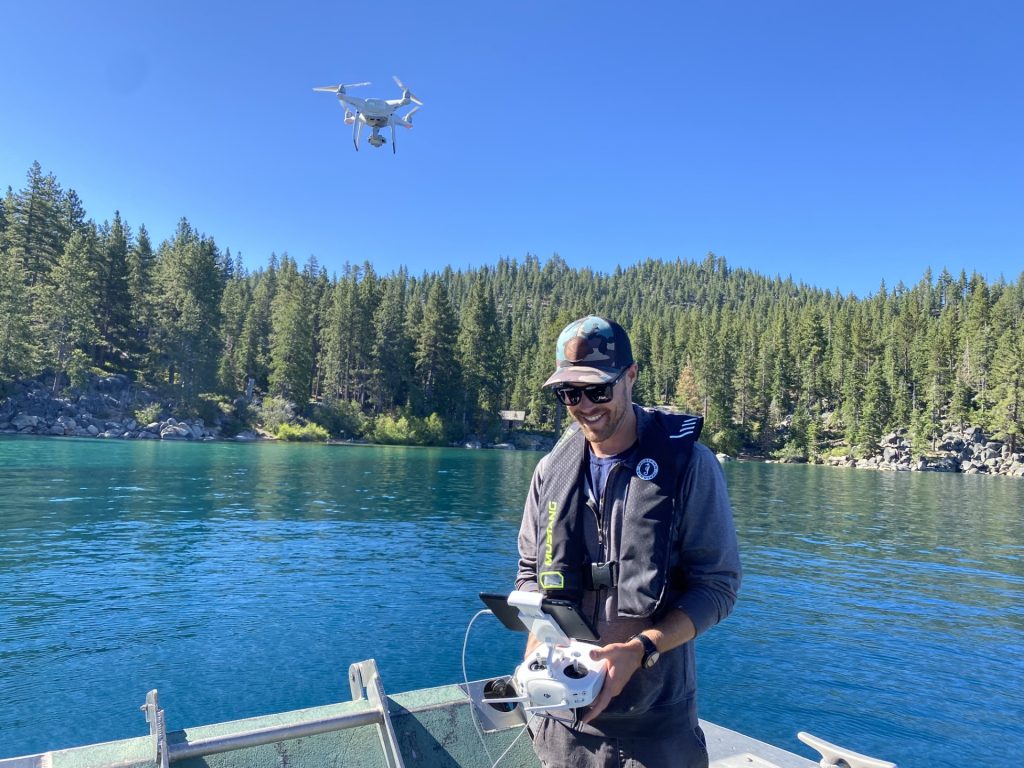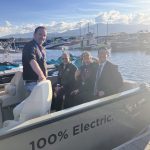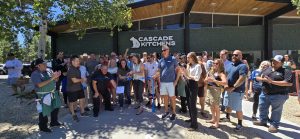New tech advances a decades long Tahoe algae monitoring program
LAKE TAHOE, Calif. / Nev. – Innovations at the Tahoe Environmental Research Center are taking its decades-long algae monitoring program to new heights with the help of two aerial assets. The advancements could have important implications in the future for public safety and recreation.
Previous monitoring was limited to diver sampling, but there’s only so much of the lake that divers can realistically cover. The program is now keeping tabs on the entire shoreline thanks to a helicopter and drone.
Lake Tahoe’s 72 miles of shoreline and 191 square miles of surface area make any type of monitoring challenging. “It’s a big lake,” Brandon Berry says, staff researcher at the center, “so, that’s where the tech comes into it.”

Done monthly, the monitoring provides an expanded view of Tahoe’s algal status. The data will offer insights on seasonal changes throughout the year and long-term trends years over.
Not only does it offer a more comprehensive view, it does so faster and more efficiently with AI-assisted software that—pixel by pixel—analyzes the drone and helicopter images to estimate algae coverage near shore.
“It’s increasing the efficiency of that workflow,” Berry explains, who runs the drone program, “from having that imagery, to [having] a useful output of that imagery.”
The new technology doesn’t mean the previous dive methods are obsolete. “This is an extension of all that work. It’s just constantly building on itself,” he says, explaining that entire site algae biomass estimates require both the remote sensing and diver samples.
TERC’s decades worth of diver data is also getting incorporated into the software.
“It’s a lot of pieces that come together and form this output that we’re getting with this, which is really cool,” Berry says.
Researchers are still fine tuning the AI-assisted software, but hope to have the technology automated to further increase efficiency going forward.
Efficiency is important as new players arrive on Tahoe’s scene, such as floating algae called metaphyton. While the program has monitored periphyton for years, algae that attach to rocks, metaphyton blooms are relatively new. Berry describes metaphyton as bright green floating carpets.
“I think the big yuck part about that is that it’s free-floating algae, so inevitably it’s driven by currents, or wind, or wave action,” he explains. These floating carpets may be linked to the invasive Asian clams, which prefer sandy and warmer areas. Metaphyton’s detached nature allows it to wash up on beaches, sitting, rotting and smelling.
“That’s not exactly what people think of when they come to visit Lake Tahoe,” Berry expresses, noting important implications for recreation as the shoreline is where a majority of the public interacts with the lake.
This new program seeks to understand the drivers behind these floating carpets and as well as other algae. It could also offer broader insights, as Berry explains, the near shore area is a significant indicator of lake health, water clarity and water quality.
Harmful algal blooms (HABs) are another aspect on the program’s radar, especially as they are generally appearing to become more prevalent, creating public safety concerns. Although the program is currently not monitoring specifically for those, Berry says the program could develop models in the future for alerting and predicting HABs in the event they occur in Tahoe.
This new program now has roughly two years under its belt and benefits from community support, passion and generosity. Mike Bruno, who is on the TERC advisory board, is passionate about algae at Tahoe and facilitates the helicopter and pilot services.
The drone was donated to TERC about eight years ago. However, the program is currently raising funds for a new drone as new federal regulations will force the team to retire its current drone. The Tahoe environment and time have also taken their toll.
A new drone will not only allow the program to continue but also introduce new monitoring capabilities such as multispectral, lidar and thermal imaging.
The evolution of TERC’s algae monitoring is an example of how creativity, technology and scientific breakthroughs go hand-in-hand.
“I think the drone is a perfect example of that,” Berry said. “You’re really only limited by what you can dream up and how to use this tool.”

Support Local Journalism

Support Local Journalism
Readers around the Lake Tahoe Basin and beyond make the Tahoe Tribune's work possible. Your financial contribution supports our efforts to deliver quality, locally relevant journalism.
Now more than ever, your support is critical to help us keep our community informed about the evolving coronavirus pandemic and the impact it is having locally. Every contribution, however large or small, will make a difference.
Your donation will help us continue to cover COVID-19 and our other vital local news.










